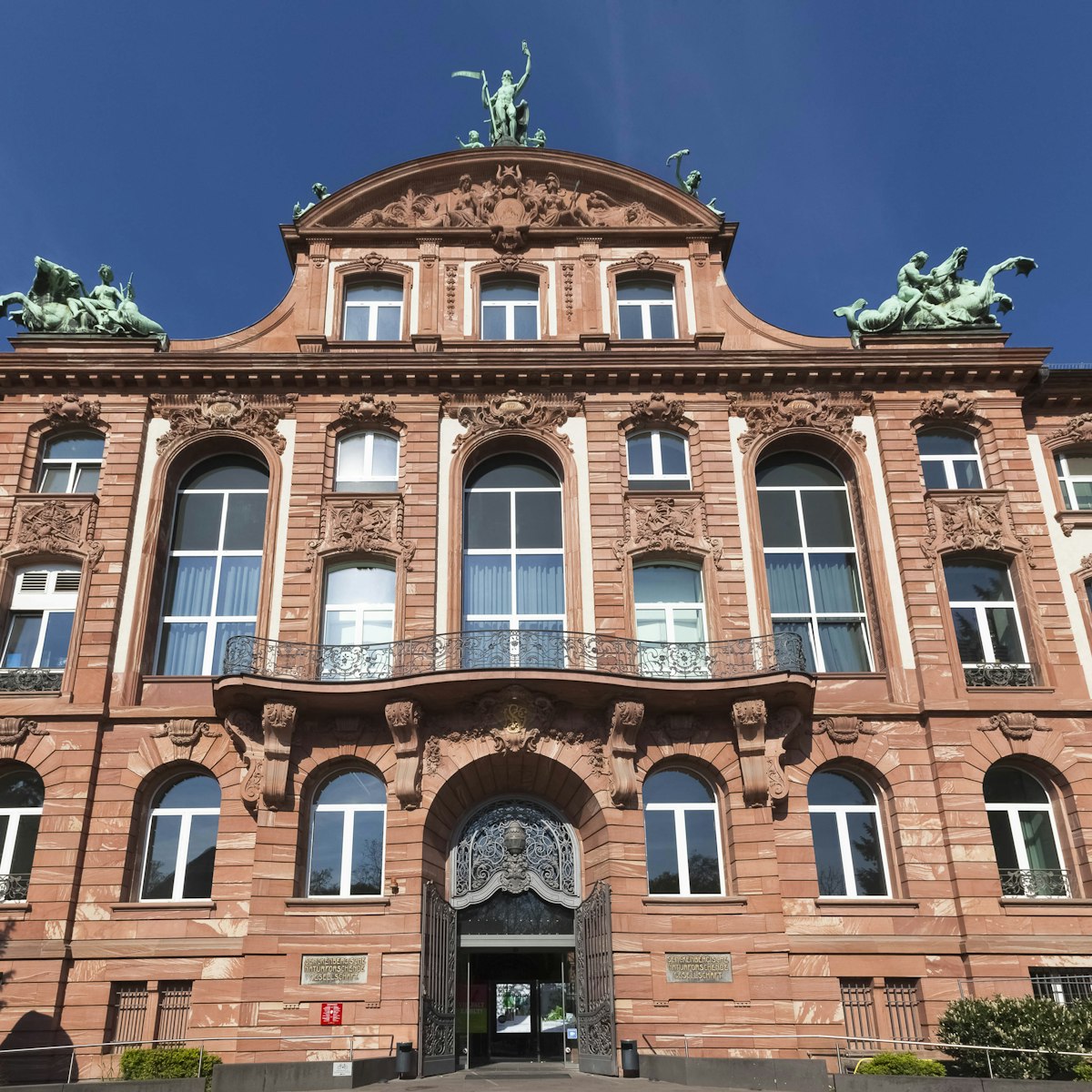The monumental seven-storey IG-Farbenhaus was erected in 1931 as the headquarters of IG-Farben (pronounced ‘ee geh far-behn’), the mammoth German chemicals conglomerate whose constituent companies included Agfa, BASF, Bayer and Hoechst. After Hitler took power, Jewish scientists and executives were fired, and the company’s products soon became central to the Nazi war effort.
Inside, on the 1st to 5th floors at cross wing Q4, you can check out an informative historical exhibit (in English and German) with photographs and illustrations.
From 1941 to 1944, staff based in this building carried out the work of coordinating the production of the company’s most notorious product, Zyklon-B, the cyanide-based killing agent used in the gas chambers of Auschwitz.
After the war, IG-Farbenhaus served briefly as the headquarters of General Dwight D Eisenhower, Supreme Commander of Allied Forces in Europe, and later as the headquarters of US occupation forces (‘the Pentagon in Europe’) and as a CIA bureau.
In 1995, with the Cold War over, US forces handed the building back to Germany’s federal government. After refurbishment, it became the focal point of the new Westend campus of Johann-Wolfgang-Goethe-Universität – and a bastion of the spirit of free inquiry and humanism that Nazism tried to extinguish.
Seven of its nine floors are served by two paternoster lifts, whose open cabins keep cycling around like rosary beads. Signs warn that these historic elevators are not safe for children, pets and people wearing backpacks or skates.
About 50m from the southwest corner of the building (to the left as you approach the main entrance) stands the Wollheim Memorial.
Under the trees in front of IG-Farbenhaus, panels show photographs of German Jews, later sent to Buna/Monowitz, enjoying life in the years before the Holocaust.




